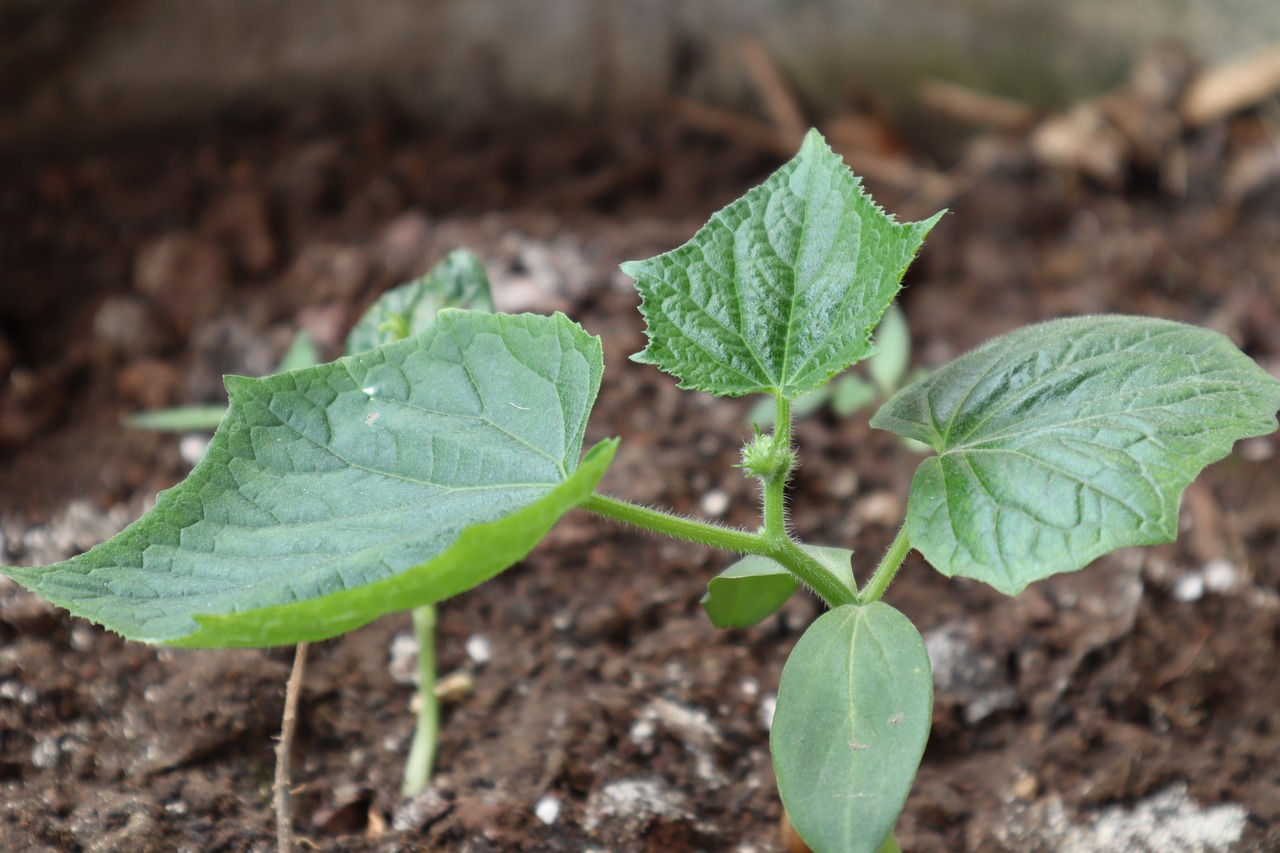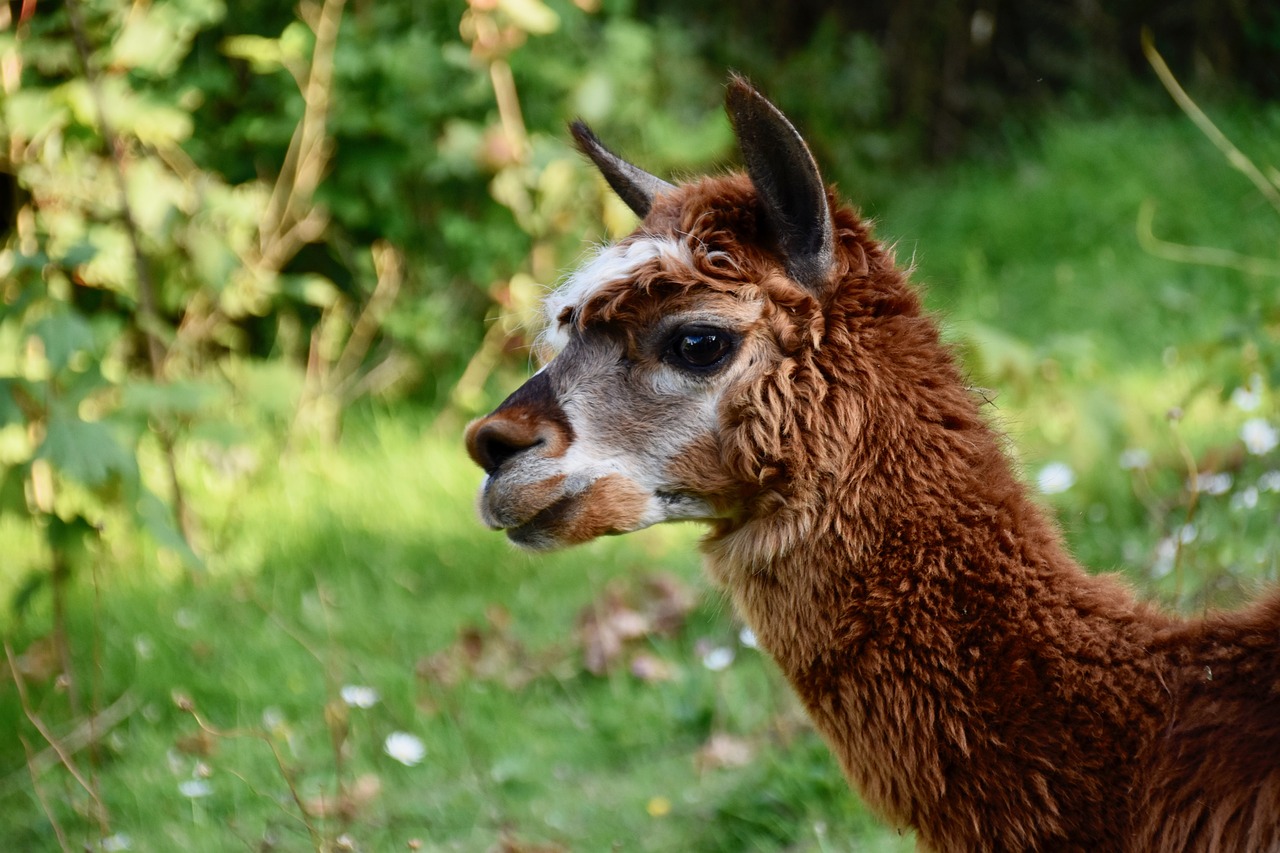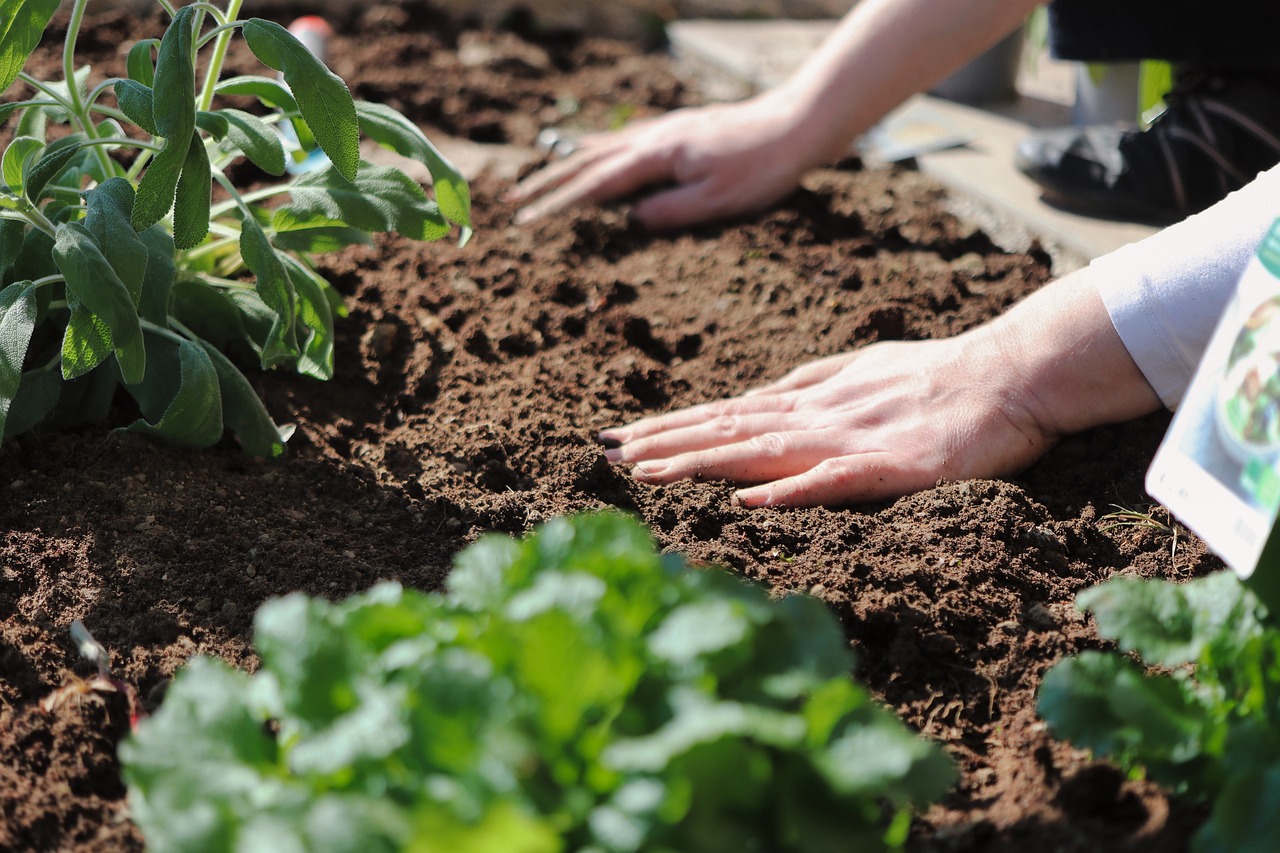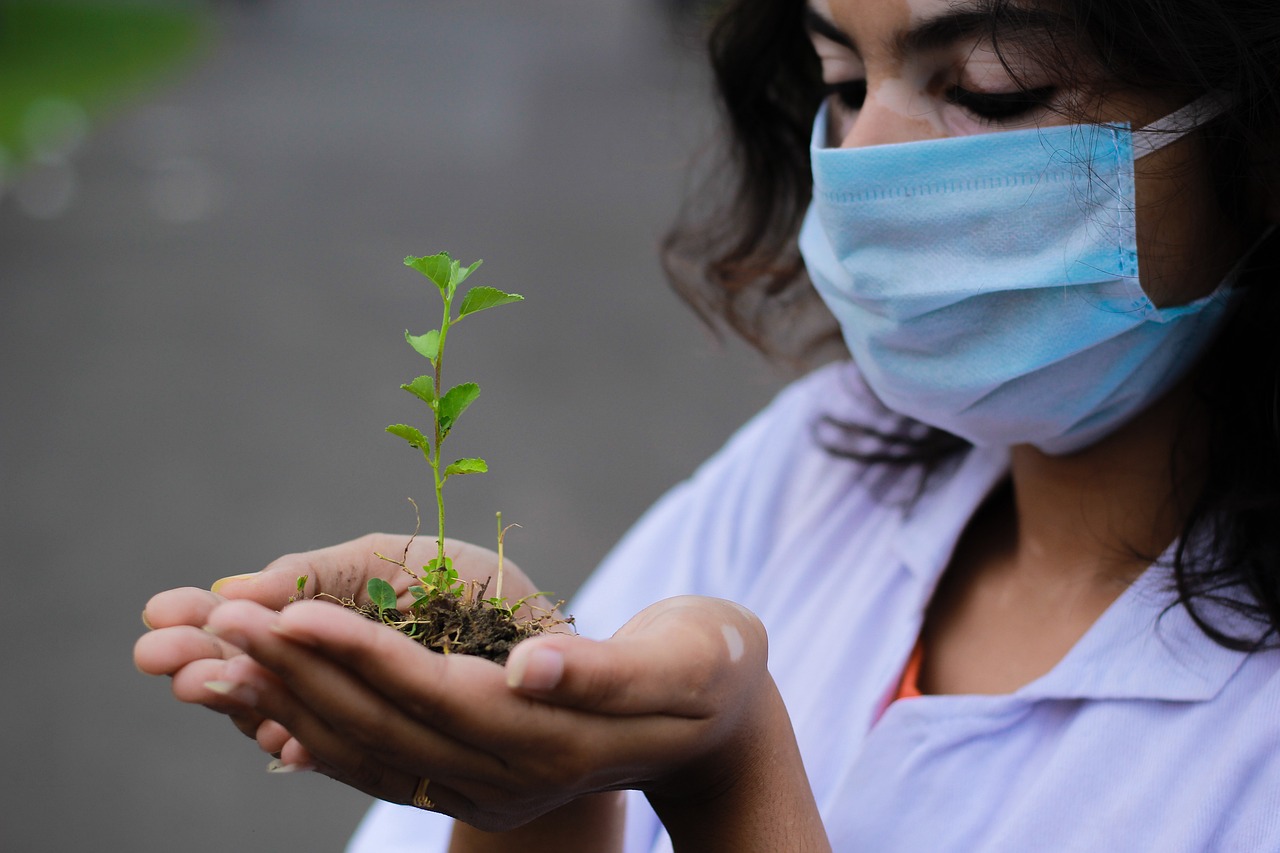The Basics of Companion Planting
Companion planting is more than just a gardening trend; it's a time-honored practice that can transform your garden into a thriving ecosystem. Imagine your garden as a bustling community where each plant plays a unique role, much like people in a neighborhood. By strategically placing different plants together, you can create a harmonious environment that promotes growth, deters pests, and enhances flavors. This article delves into the fundamentals of companion planting, highlighting its benefits, techniques, and some common plant pairings that can elevate your garden's productivity and biodiversity.
At its core, companion planting is about understanding the relationships between various plants. It’s like matchmaking in the plant world! Some plants, when grown together, provide mutual benefits that can lead to healthier growth and increased yields. For instance, certain plants can enhance soil nutrients, while others may provide shade or support to their neighbors. This section will explore the principles and science behind companion planting, revealing how these plant partnerships can create a vibrant garden ecosystem.
The advantages of companion planting are numerous and compelling. Not only does it help with pest control, but it also promotes improved growth and enhanced flavor in your produce. By understanding the key benefits, you can harness the power of companion planting to create a flourishing garden. Let's dive deeper into these benefits:
One of the most significant advantages of companion planting is its ability to naturally deter pests. Imagine having a garden where harmful insects are kept at bay without the use of harsh chemicals. Certain plant combinations can repel these pests effectively. For example, marigolds are known to deter nematodes and other harmful insects, making them a popular choice for companion planting. This section will discuss how specific plants can work together to protect your garden from unwanted visitors.
Many plants emit scents or compounds that are unappealing to pests. For instance, basil is often planted alongside tomatoes because its strong aroma can confuse and repel aphids and other pests. By incorporating natural repellents into your garden, you can create a more resilient environment. Here are some examples of effective natural repellents:
- Marigolds: Repel nematodes and aphids.
- Basil: Deters flies and mosquitoes.
- Lavender: Keeps moths and fleas away.
Companion plants can also attract beneficial insects that prey on harmful pests. Think of these insects as the superheroes of your garden! Ladybugs and lacewings, for example, are attracted to plants like dill and fennel. By encouraging these helpful allies, you can create a balanced ecosystem that naturally controls pest populations. This section will highlight how to use plants to attract these beneficial insects and enhance your garden's health.
Companion planting can lead to improved growth rates and higher yields. Some plant pairings have a synergistic effect, meaning they can enhance each other's growth when planted together. For instance, the classic combination of corn, beans, and squash—known as the "Three Sisters"—is a perfect example. The corn provides support for the beans, while the squash's broad leaves help to shade the soil, reducing weeds and retaining moisture. This section will discuss how these partnerships can result in healthier plants and more abundant harvests.
Choosing compatible plants is crucial for successful companion planting. Just like in friendships, not all plants get along. This section provides guidelines on how to select plant pairings effectively, ensuring your garden thrives.
Some plants naturally thrive together, while others may hinder each other's growth. For example, pairing carrots with onions is beneficial because onions can repel carrot flies. Identifying groups of plants that work well in tandem can lead to a flourishing garden. This section will explore some of these compatible plant groups, helping you make informed choices for your garden.
On the flip side, certain plants can negatively affect each other's growth. For instance, planting tomatoes near potatoes can lead to increased susceptibility to blight. Understanding which plants to avoid pairing together is just as important as knowing which ones to combine. This subsection emphasizes the importance of research and planning in companion planting.
There are various techniques you can apply in companion planting to maximize the benefits of plant pairings. This section outlines popular methods that can help you get the most out of your garden.
Intercropping involves growing different crops in proximity, allowing for efficient use of space and resources. This technique can lead to a more diverse and productive garden. For example, planting lettuce between rows of taller crops like corn can maximize sunlight and water usage.
Succession planting allows for continuous harvests throughout the growing season. By timing your plantings effectively, you can ensure a steady supply of produce. This subsection discusses how to plan your garden for maximum efficiency and yield.
1. What is companion planting?
Companion planting is the practice of growing different plants together for mutual benefits, such as pest control and improved growth.
2. Can I use companion planting in small gardens?
Absolutely! Companion planting is particularly beneficial in small spaces, as it maximizes resources and yields.
3. How do I know which plants are compatible?
Researching plant relationships and using resources like companion planting charts can help you identify compatible plants.

Understanding Companion Planting
Companion planting is more than just a trendy gardening buzzword; it’s a time-honored practice that taps into the natural relationships between plants. Imagine your garden as a bustling community where each plant has a role to play, just like people in a neighborhood. By strategically placing different plants together, you can create a harmonious environment that benefits all. This technique is grounded in the principles of ecology and biology, where plants interact with each other in ways that can enhance their growth and resilience.
At its core, companion planting is about understanding the synergy between different species. Some plants can improve soil health, while others can provide shade or support. For example, consider the classic pairing of tomatoes and basil. Not only do they taste great together in a salad, but basil also helps to repel harmful pests that might otherwise feast on your tomatoes. This mutual benefit is what makes companion planting so appealing to gardeners looking to maximize their harvests.
Moreover, the science behind companion planting is fascinating. It involves understanding how plants communicate and interact with one another. Plants release various chemicals into the soil and air, which can either attract or repel other species. Some plants, like marigolds, are known for their ability to deter nematodes and other pests through the release of natural compounds. This is akin to how some people in a community might act as protectors, keeping harmful influences at bay.
In addition to pest control, companion planting can also improve overall garden health. By planting certain species together, you can enhance nutrient uptake and promote biodiversity. For instance, legumes like peas and beans have a unique ability to fix nitrogen in the soil, enriching it for neighboring plants. This creates a more balanced ecosystem where plants can thrive together, ultimately leading to healthier growth and more abundant yields.
In summary, understanding companion planting is about recognizing the intricate web of relationships that exist in nature. By fostering these connections in our gardens, we can create a thriving environment where plants support one another, leading to improved growth, pest control, and overall garden vitality. So, whether you're a seasoned gardener or just starting out, embracing the principles of companion planting can transform your gardening experience into a fruitful and rewarding journey.

Benefits of Companion Planting
Companion planting is not just a trendy gardening technique; it’s a time-tested method that offers a multitude of benefits for both novice and experienced gardeners alike. By strategically placing plants together, you can create a thriving ecosystem that promotes healthier growth, enhances flavor, and effectively manages pests without the need for harsh chemicals. Imagine your garden as a bustling community where each plant plays a unique role, contributing to the overall health and productivity of the space.
One of the most significant advantages of companion planting is its ability to provide natural pest control. Instead of relying on synthetic pesticides that can harm beneficial insects and disrupt the balance of your garden, companion planting encourages a more holistic approach. For instance, marigolds are well-known for their pest-repelling qualities. By planting them alongside vegetables like tomatoes, you can naturally deter nematodes and other harmful pests. This synergy not only protects your crops but also fosters a more diverse and resilient garden ecosystem.
Furthermore, companion planting can lead to improved growth rates and yields. Certain plants, when grown together, can enhance each other’s growth through a process known as allelopathy, where one plant releases chemicals that promote the growth of another. For example, the classic pairing of corn, beans, and squash—often referred to as the "Three Sisters"—demonstrates this principle beautifully. The corn provides a natural support for the beans, while the beans enrich the soil with nitrogen, and the squash spreads out to block sunlight, suppressing weeds. Together, they create a harmonious environment that maximizes growth and productivity.
Additionally, the flavors of your homegrown produce can be significantly enhanced through companion planting. Certain herbs, like basil, can elevate the taste of tomatoes when grown nearby, creating a culinary dream team right in your garden. This not only improves the quality of your harvest but also adds an element of excitement to your meals. Imagine biting into a juicy tomato that bursts with flavor, all thanks to the clever pairing of plants!
In summary, the benefits of companion planting are vast and varied. By embracing this technique, you can:
- Reduce pest populations naturally
- Boost growth rates and yields
- Enhance the flavor of your produce
- Promote biodiversity in your garden
Ultimately, companion planting is about creating a balanced and thriving garden ecosystem. It’s a practice that not only nurtures your plants but also enriches your gardening experience, making it more enjoyable and rewarding. So, why not give it a try? Your garden—and your taste buds—will thank you!
Q: What is companion planting?
A: Companion planting is the practice of growing different plants together for mutual benefits, such as pest control, improved growth, and enhanced flavor.
Q: How does companion planting help with pest control?
A: Certain plants can naturally repel pests or attract beneficial insects that prey on harmful pests, reducing the need for chemical pesticides.
Q: Can companion planting really improve the flavor of my vegetables?
A: Yes! Some herbs and vegetables can enhance each other's flavors when grown in proximity, leading to tastier produce.
Q: Are there any plants I should avoid pairing together?
A: Yes, some plants can hinder each other's growth. It's essential to research compatible plant pairings for successful companion planting.

Pest Control
Pest control is one of the most compelling reasons to embrace companion planting in your garden. Imagine your garden as a bustling city, where each plant plays a role—some as protectors and others as prey. By strategically pairing plants, you not only create a more harmonious ecosystem but also significantly reduce the need for chemical pesticides. This natural approach allows you to cultivate a thriving garden while being kind to the environment. For instance, certain plants are known to emit specific scents that can confuse or repel pests. Think of it as planting a fragrant barrier that keeps unwanted guests at bay!
One classic example is the pairing of marigolds and tomatoes. Marigolds are famous for their ability to deter nematodes and other harmful insects. When planted alongside tomatoes, they act like a protective shield, keeping those pesky pests away while allowing the tomatoes to flourish. This synergy not only protects your plants but also enhances their growth by creating a balanced environment. Moreover, the vibrant colors of marigolds can attract beneficial insects, making your garden a safe haven for pollinators and predatory insects alike.
But how do these plant combinations work their magic? It all boils down to the natural compounds that many plants produce. Some plants release volatile organic compounds (VOCs) that can repel insects. For example, the scent of basil is known to ward off flies and mosquitoes. By incorporating basil into your garden, you can enjoy its culinary benefits while simultaneously keeping those annoying bugs at bay. It’s a win-win situation!
Furthermore, companion planting encourages the presence of beneficial insects that act as natural pest controllers. Ladybugs, lacewings, and parasitic wasps are all fantastic allies in the fight against garden pests. By planting flowers like yarrow or dill, you can attract these helpful insects, creating a self-sustaining ecosystem. These beneficial insects prey on harmful pests, reducing their population without the need for harmful chemicals. It's like having a tiny army of guardians watching over your garden!
In summary, using companion planting as a pest control strategy not only protects your plants but also promotes biodiversity in your garden. By selecting the right plant pairings, you can create a thriving environment that minimizes pest issues naturally. So, the next time you’re planning your garden layout, consider how you can use these natural relationships to your advantage. With a little foresight and planning, you can transform your garden into a resilient ecosystem that flourishes without the need for synthetic interventions.
- What is companion planting? Companion planting is the practice of growing different plants together for mutual benefits, such as pest control, improved growth, and enhanced flavor.
- How does companion planting help with pest control? Certain plants can deter pests naturally through scents or compounds they emit, while others attract beneficial insects that prey on harmful pests.
- Can all plants be paired together? No, some plants can hinder each other's growth. It’s essential to research compatible and incompatible plant pairings.
- What are some examples of good companion plants? Some popular pairings include tomatoes with marigolds, basil with peppers, and carrots with onions.

Natural Repellents
When it comes to keeping your garden thriving, are like the superheroes of the plant world. These are the plants that emit scents or compounds capable of warding off pesky insects that threaten your precious greens. Imagine having a garden where the plants not only grow but also act as a protective barrier against pests—sounds like a dream, right? Well, with the right companions, this dream can become a reality!
One of the most famous natural repellents is marigold. This vibrant flower is known for its ability to deter nematodes and other harmful insects. The secret lies in its strong scent, which many pests find unappealing. By planting marigolds alongside your vegetables, you’re not just adding a splash of color; you’re also creating a natural shield!
Another excellent choice is basil. Not only does it enhance the flavor of your dishes, but it is also a potent repellent for flies and mosquitoes. Imagine enjoying a delicious caprese salad, knowing that the basil in your garden is working double duty—flavoring your food and keeping unwanted insects at bay!
Here’s a quick table summarizing some popular natural repellents and the pests they deter:
| Plant | Pests Deterred |
|---|---|
| Marigold | Nematodes, aphids |
| Basil | Flies, mosquitoes |
| Lavender | Moths, fleas |
| Rosemary | Beetles, cabbage moths |
But it doesn’t stop there! Lavender is another fantastic option, known for its lovely fragrance and ability to repel moths and fleas. Just picture your garden filled with the soothing scent of lavender while keeping harmful pests away. It’s like a spa day for your plants!
Moreover, the presence of these natural repellents can create a balanced ecosystem in your garden. They not only fend off unwanted guests but also attract beneficial insects that prey on pests. For instance, ladybugs and lacewings are drawn to gardens with marigolds, and they are known for their voracious appetite for aphids. So, by planting these natural repellents, you’re inviting an army of allies to your garden party!
In conclusion, incorporating natural repellents into your companion planting strategy is an effective way to enhance the health and productivity of your garden. By choosing the right plants, you can create a thriving ecosystem that minimizes the need for chemical pesticides, allowing your garden to flourish naturally. So, the next time you’re planning your garden layout, remember: a little bit of marigold, basil, and lavender can go a long way in keeping your plants healthy and happy!
Q: What are companion plants?
A: Companion plants are different plant species that are grown together for mutual benefits, such as pest control, improved growth, and enhanced flavor.
Q: How do natural repellents work?
A: Natural repellents work by emitting scents or compounds that deter harmful insects, creating a protective barrier around your garden.
Q: Can I use natural repellents with any plants?
A: While many plants can benefit from natural repellents, it’s essential to choose compatible plants to ensure they thrive together.
Q: Are there any downsides to using companion planting?
A: Generally, companion planting is beneficial, but it’s crucial to avoid pairing incompatible plants, as they can hinder each other’s growth.

Beneficial Insects
When it comes to gardening, not all insects are created equal. While some may wreak havoc on your precious plants, others can be your garden's best friends. play a crucial role in maintaining a healthy ecosystem. They help control pest populations, pollinate flowers, and even contribute to soil health. Think of them as the unsung heroes of the garden, working tirelessly behind the scenes to ensure your plants flourish.
One of the most notable groups of beneficial insects is the predators. These little warriors feast on common garden pests like aphids, caterpillars, and spider mites. For instance, ladybugs are famous for their appetite for aphids, which can devastate your plants if left unchecked. A single ladybug can consume up to 5,000 aphids in its lifetime! Similarly, lacewings and predatory wasps also help keep pest numbers down, acting as natural pest control agents.
Another important role is played by pollinators. Bees, butterflies, and even some beetles help in the pollination process, which is vital for the production of fruits and seeds. Without these pollinators, many plants would struggle to reproduce, leading to a decline in biodiversity. By planting flowers that attract these beneficial insects, you can create a thriving environment that supports both your garden and the local ecosystem.
To attract these beneficial insects, consider incorporating a variety of flowering plants into your garden. Here are a few popular choices:
- Marigolds: These vibrant flowers are not only beautiful but also attract ladybugs and lacewings.
- Cosmos: Their open blooms are perfect for bees and butterflies, providing a rich nectar source.
- Yarrow: This hardy plant attracts a variety of beneficial insects and also helps improve soil health.
Creating a habitat for beneficial insects is as simple as planting a diverse array of flowers, herbs, and vegetables. Additionally, avoiding the use of synthetic pesticides will help ensure that these helpful allies can thrive in your garden. Remember, when you create an inviting space for beneficial insects, you’re not just enhancing your garden's productivity; you’re also contributing to a healthier environment.
In conclusion, beneficial insects are essential partners in the garden. By understanding their role and taking steps to attract them, you can create a more balanced ecosystem that supports plant health and productivity. So, next time you see a ladybug or a bee buzzing around, remember that they are not just visitors; they are vital contributors to your gardening success!
Q: How can I attract beneficial insects to my garden?
A: Plant a variety of flowering plants that provide nectar and pollen, such as marigolds, cosmos, and yarrow. Avoid using synthetic pesticides to create a safe environment for these insects.
Q: What are some common beneficial insects?
A: Common beneficial insects include ladybugs, lacewings, predatory wasps, bees, and butterflies. Each plays a unique role in pest control and pollination.
Q: Do I need to provide water for beneficial insects?
A: Yes, providing shallow dishes of water or creating small puddles can help beneficial insects stay hydrated, especially during dry spells.

Improved Growth
When it comes to gardening, we all dream of lush, vibrant plants that yield bountiful harvests. One of the most fascinating aspects of companion planting is its ability to promote among various plant species. Imagine your garden as a bustling community, where every plant plays a unique role, supporting and enhancing the growth of its neighbors. This synergy can lead to healthier plants and increased productivity, making your gardening experience not only rewarding but also incredibly efficient.
Research has shown that certain plant combinations can significantly boost growth rates. For instance, when you pair nitrogen-fixing plants like legumes with heavy feeders such as corn or tomatoes, the legumes enrich the soil with nitrogen, creating a nutrient-rich environment that promotes robust growth. This is akin to having a friend who brings snacks to a study session; it just makes everything easier and more enjoyable!
Moreover, companion planting can also help in maximizing space. By planting crops that grow at different rates or heights, you can utilize your garden area more effectively. For example, tall sunflowers can provide shade for shorter plants like lettuce, which prefer cooler temperatures. This layering technique not only optimizes space but also helps in creating a microclimate, enhancing growth conditions for all involved.
To illustrate the impact of companion planting on growth, consider the following table that highlights some effective plant pairings:
| Plant Pairing | Benefits |
|---|---|
| Tomatoes & Basil | Improves flavor and growth; basil repels pests. |
| Carrots & Onions | Onions deter carrot flies; carrots improve soil structure. |
| Corn & Beans | Beans fix nitrogen; corn provides support for beans to climb. |
| Marigolds & Various Vegetables | Marigolds repel nematodes and other pests, enhancing growth. |
In addition to enhancing growth through nutrient sharing and strategic placement, companion planting can also lead to greater resilience against diseases and pests. When plants are thriving together, they create a more complex ecosystem that can deter harmful insects and diseases. It’s like having a strong neighborhood watch; the more plants there are working together, the less likely pests will find a way in.
So, if you're looking to boost the health and productivity of your garden, consider the art of companion planting. By selecting the right plant partners, you can create a thriving garden ecosystem that not only looks beautiful but also yields an abundant harvest. Remember, gardening is not just about planting seeds; it’s about nurturing relationships—between plants and between you and your garden!
- What is companion planting? Companion planting is the practice of growing different plants together for mutual benefits, such as pest control and improved growth.
- How does companion planting improve growth? Certain plant combinations can enhance nutrient availability and create a supportive growing environment, leading to healthier plants.
- Are there any plants I should avoid pairing together? Yes, some plants can inhibit each other's growth. For example, tomatoes and potatoes should not be planted together as they are susceptible to the same diseases.
- Can I use companion planting in containers? Absolutely! Companion planting can be very effective in container gardens, allowing you to maximize space and resources.

Choosing the Right Companions
When it comes to companion planting, the secret sauce lies in selecting the right plant pairings. Just like in life, not all friends are meant to be together; some enhance each other's strengths while others might just drag them down. Understanding which plants work well together is essential for maximizing your garden's potential. So, how do you go about choosing these garden companions?
First off, it’s crucial to recognize that plants have unique needs and characteristics. For instance, some plants thrive in the shade while others bask in the sun. Similarly, certain plants prefer moist soil, while others are drought-tolerant. This is where compatibility comes into play. You want to pair plants that have similar requirements to create a harmonious environment. Think of it like hosting a dinner party; you wouldn’t invite guests with completely opposing tastes in food, right?
Moreover, it’s not just about liking the same conditions; plants can also affect each other’s growth through chemical interactions. Some plants release compounds that can either promote growth or inhibit it. For example, the classic pairing of tomatoes and basil is a match made in heaven. Basil not only enhances the flavor of tomatoes but also helps repel pests that are drawn to them. On the flip side, planting tomatoes near corn can lead to stunted growth due to competition for nutrients.
To help you navigate the world of companion planting, here are a few guidelines to consider:
- Research Plant Families: Many plants belong to the same family and have similar needs. For example, members of the brassica family, like cabbage and broccoli, thrive together.
- Utilize Companion Planting Charts: These charts can be a gardener's best friend, providing quick references for which plants pair well.
- Observe Nature: Take a stroll through natural ecosystems. Notice how plants coexist in the wild and mimic those relationships in your garden.
Now, let’s talk about avoiding incompatible plants. Just as some friendships can be toxic, certain plant combinations can lead to poor growth or even failure. For example, planting onions near beans can stunt the growth of the beans, while carrots and dill can enhance each other's growth when planted together. Knowing which plants to avoid is just as important as knowing which ones to embrace.
In conclusion, choosing the right companions in your garden is about understanding the unique relationships between plants. By considering their needs, characteristics, and potential interactions, you can create a thriving ecosystem that not only boosts productivity but also enhances the beauty of your garden. So, roll up your sleeves, dig in, and start experimenting with different pairings. You might just be surprised at the results!
Q: How do I know which plants are compatible?
A: Research is key! Use companion planting charts or guides that highlight compatible and incompatible plants. Observing natural ecosystems can also provide valuable insights.
Q: Can I change plant pairings in subsequent years?
A: Absolutely! Crop rotation is a great practice that helps improve soil health and can prevent pest build-up. Just ensure you’re still following compatibility guidelines.
Q: What are some common mistakes in companion planting?
A: Some common mistakes include ignoring plant needs, not considering growth habits, and failing to research potential negative interactions. Always do your homework!

Compatible Plant Groups
When diving into the world of companion planting, one of the most exciting aspects is discovering which plants play well together. Just like a well-rehearsed band, some plants harmonize beautifully, enhancing each other's growth and resilience. The key to successful companion planting lies in understanding the that thrive in each other's company. For instance, the classic combination of tomatoes and basil is not just a culinary delight; they also benefit each other in the garden. Basil can help repel pests that typically target tomatoes, while tomatoes provide shade for basil, preventing it from wilting in the summer sun.
Another fantastic duo is the pairing of carrots and onions. These two vegetables not only complement each other in flavor but also in growth. Carrots can help deter onion flies, while onions can mask the scent of carrots, keeping them safe from pests. This mutual protection is a prime example of how understanding plant relationships can lead to a more fruitful garden. Additionally, legumes, such as peas and beans, have the unique ability to fix nitrogen in the soil, which benefits neighboring plants like corn and squash. This symbiotic relationship not only improves soil health but also maximizes space and resource efficiency in your garden.
To help visualize these relationships, consider the following table that outlines some of the most compatible plant groups:
| Plant Group | Compatible Partners | Benefits |
|---|---|---|
| Tomatoes | Basil, Marigold | Pest control, flavor enhancement |
| Carrots | Onions, Rosemary | Pest deterrence, space optimization |
| Legumes | Corn, Squash | Nitrogen fixation, soil enrichment |
| Radishes | Cucumbers, Spinach | Fast growth, pest repellent |
Understanding these compatible plant groups can transform your gardening experience. By strategically placing these plants together, you can create a thriving ecosystem that nurtures not just the plants themselves but also the soil and beneficial insects. Remember, the garden is a living entity, and fostering these relationships is akin to building a community where everyone contributes to the well-being of the whole.
As you plan your garden layout, keep these compatible groups in mind. Experimenting with different combinations can lead to surprising results and even more bountiful harvests. Just like friendships in life, the right plant pairings can lead to flourishing growth and a vibrant garden that is both productive and beautiful.
- What is companion planting? Companion planting is the practice of growing different plants together to enhance growth, deter pests, and improve overall garden health.
- How do I know which plants are compatible? Researching plant characteristics and their interactions is key. Many resources are available online, including gardening books and websites.
- Can I use companion planting in containers? Absolutely! Companion planting works well in containers, allowing you to maximize space and resources even in small areas.
- What should I avoid when companion planting? It's important to avoid pairing plants that compete for nutrients or attract the same pests, as this can hinder growth and yield.

Avoiding Incompatible Plants
When it comes to companion planting, knowing which plants to avoid is just as crucial as knowing which ones to pair together. Some plants can be like oil and water; they simply don’t mix well. These incompatible plants can stunt each other’s growth, attract pests, or even lead to diseases that could wipe out your entire garden. Imagine putting two people in a room who can't stand each other—chaos is bound to ensue! Similarly, in your garden, pairing the wrong plants can lead to an unproductive and unhealthy environment.
One of the most common examples of incompatible plants is the relationship between tomatoes and potatoes. Both belong to the nightshade family, but when grown together, they can attract the same pests, such as the Colorado potato beetle. This not only puts both crops at risk but can also lead to a higher chance of disease transmission. Another notorious pairing to avoid is carrots and dill. While they may seem harmless, dill can inhibit the growth of carrots, leaving you with a less-than-stellar harvest.
Here are a few more plant pairings to steer clear of:
- Beans and onions: Onions can stunt the growth of beans.
- Cabbage and strawberries: Cabbage can hinder strawberry growth.
- Fennel and most other plants: Fennel is a notorious bully in the garden and can inhibit the growth of many crops.
Understanding these relationships can save you a lot of time, effort, and disappointment. It’s essential to do your homework before planting. You wouldn’t want to invite a guest to a party who doesn’t get along with anyone else, right? Similarly, when planting your garden, take the time to research and ensure that your companions will harmonize rather than clash.
Moreover, the environmental conditions also play a significant role in plant compatibility. For instance, some plants thrive in full sun while others prefer shade. If you place a sun-loving plant next to one that thrives in cooler, shaded conditions, you’re setting both up for failure. This highlights the importance of not only considering the plants themselves but also their specific needs and preferences.
In conclusion, avoiding incompatible plants is a fundamental aspect of successful companion planting. By carefully selecting your plant pairings and understanding their relationships, you can cultivate a thriving garden that maximizes growth and minimizes pest problems. Remember, a harmonious garden is a productive garden!
Q: What are some signs that my plants are incompatible?
A: Signs include stunted growth, yellowing leaves, and increased pest activity. If you notice these issues, it may be time to reassess your plant pairings.
Q: Can I still grow incompatible plants in the same garden?
A: Yes, but it’s best to keep them at a distance from one another to minimize negative interactions. You can also use barriers like mulch or rows to separate them.
Q: How can I find out which plants are compatible?
A: There are numerous resources available, including gardening books and online databases, that provide comprehensive lists of compatible and incompatible plants.
Q: Is it possible to change the compatibility of plants?
A: While you can’t change a plant’s inherent compatibility, you can improve the growing conditions, such as soil quality and sunlight exposure, to help them thrive better together.

Common Companion Planting Techniques
When it comes to companion planting, there are several techniques that can help you maximize the benefits of your garden. These methods are not only practical but also enhance the overall health and productivity of your plants. Let’s dive into some of the most effective techniques that gardeners have been using for ages.
One of the most popular methods is intercropping. This technique involves growing different crops in close proximity to one another. The idea is simple yet powerful: by planting complementary crops side by side, you can optimize space and resources, allowing each plant to thrive. For instance, planting corn with beans and squash is a classic example of intercropping known as the "Three Sisters" method. The corn provides a natural support for the beans to climb, the beans fix nitrogen in the soil, and the squash spreads out to block sunlight, preventing weeds from taking over.
Another technique that has gained popularity among gardeners is succession planting. This method allows you to stagger your plantings to ensure a continuous harvest throughout the growing season. Imagine planting a row of lettuce every two weeks; by the time you harvest the first row, the next will be ready for picking. This not only maximizes your garden's output but also minimizes waste, as you can enjoy fresh produce consistently. Timing is crucial here, and keeping a planting calendar can be incredibly helpful in managing your succession planting effectively.
In addition to these methods, you can also consider trap cropping, which involves planting a specific crop to attract pests away from your main crops. For example, if you have a problem with aphids, you might plant a small patch of mustard greens nearby. The aphids will flock to the mustard greens instead of your valuable vegetables, allowing you to manage pests more effectively without resorting to harsh chemicals.
Lastly, companion planting can also be enhanced through the use of cover crops. These are plants grown primarily to improve soil health, control erosion, and suppress weeds. By incorporating cover crops like clover or vetch into your garden, you can enrich the soil with nutrients and create a healthier environment for your main crops. This technique not only benefits your plants but also contributes to the overall biodiversity of your garden ecosystem.
In summary, whether you’re intercropping, practicing succession planting, using trap crops, or incorporating cover crops, the techniques of companion planting can significantly improve your garden's productivity and health. By understanding and applying these methods, you can create a thriving garden that not only looks beautiful but also provides you with an abundance of fresh produce.
- What is companion planting? Companion planting is the practice of growing different plants together to enhance growth, deter pests, and improve flavor.
- How does intercropping work? Intercropping involves planting different crops in close proximity to make the best use of space and resources, allowing for mutual benefits.
- What are some examples of companion plants? Examples include tomatoes with basil, carrots with onions, and corn with beans and squash.
- Can companion planting help with pest control? Absolutely! Certain plants can repel harmful insects or attract beneficial insects that prey on pests.
- What is succession planting? Succession planting is the technique of planting crops at intervals to ensure a continuous harvest throughout the growing season.

Intercropping
Intercropping is a fascinating gardening technique that involves growing two or more different crops in close proximity to each other. This method is like a dance of plants, where each species plays a unique role, contributing to a harmonious ecosystem. Imagine a vibrant garden where plants support each other, sharing nutrients and resources. It's not just about maximizing space; it's about creating a thriving environment that enhances growth and resilience.
One of the most significant advantages of intercropping is its ability to optimize land use. In traditional farming, you might see rows of the same crop stretching endlessly, but with intercropping, you can mix plants that complement each other. For instance, pairing nitrogen-fixing legumes with heavy feeders like corn can lead to improved soil fertility and healthier plants. This symbiotic relationship allows crops to utilize resources more efficiently, leading to increased yields.
Moreover, intercropping can help reduce the risk of pest infestations. When different crops are planted together, pests are less likely to find their preferred host plants. This diversity acts as a natural deterrent, making it harder for pests to establish themselves. Think of it as a protective shield, where the presence of various plants confuses and deters harmful insects, allowing your garden to flourish.
To make the most of intercropping, it's essential to choose compatible plants. Here are a few popular combinations that work wonders:
- Tomatoes and Basil: This classic pairing not only enhances the flavor of tomatoes but also helps repel pests.
- Carrots and Onions: The strong scent of onions can deter carrot flies, protecting your carrot crop.
- Beans and Corn: Beans fix nitrogen in the soil, benefiting the corn, while the corn provides support for the climbing beans.
In addition to these pairings, intercropping allows for staggered harvesting. By planting crops with different growth cycles, you can enjoy a continuous supply of fresh produce throughout the growing season. This technique not only keeps your garden productive but also ensures that you have a variety of flavors and textures on your plate.
In conclusion, intercropping is a powerful strategy that can transform your gardening experience. By understanding the relationships between different plants and leveraging their unique strengths, you can create a vibrant and productive garden. So, why not give it a try? Your plants will thank you, and you'll be rewarded with bountiful harvests and a flourishing ecosystem!
1. What is intercropping?
Intercropping is the practice of growing two or more different crops in close proximity to each other to optimize space, improve soil health, and enhance pest control.
2. How does intercropping benefit my garden?
Intercropping can lead to better resource utilization, increased yields, reduced pest infestations, and a more diverse and resilient garden ecosystem.
3. Can I interplant any crops?
Not all crops are compatible. It's essential to choose plant pairings that support each other's growth and deter pests. Researching compatible plants is key to successful intercropping.
4. How do I start intercropping?
Begin by selecting a few compatible plant pairs and plan your garden layout. Consider the growth habits and nutrient needs of each plant to create a balanced environment.

Succession Planting
Succession planting is a fantastic technique that allows gardeners to maximize their harvests by ensuring that there’s always something growing and ready to be picked. Imagine your garden as a stage, where each plant plays its part in a continuous show. Instead of having a single crop that peaks at one time and then leaves you with bare soil, succession planting lets you stagger your crops, creating a symphony of growth throughout the season.
The concept is simple yet effective: you plant different crops at intervals, ensuring that as one crop is harvested, another is ready to take its place. This method not only increases productivity but also enhances soil health by preventing erosion and nutrient depletion. By maintaining a variety of plants in your garden, you create a more resilient ecosystem that can withstand pests and diseases better than a monoculture.
For instance, you might start your season with cool-weather crops like lettuce and spinach. As you harvest these leafy greens, you can follow up with warm-weather crops such as tomatoes or peppers. This way, you’re not just planting and waiting; you’re actively engaging with your garden, making the most of every inch of space. Here’s a quick example of how you might plan your succession planting:
| Planting Date | Crop 1 | Crop 2 |
|---|---|---|
| Early Spring | Lettuce | Radishes |
| Late Spring | Beans | Squash |
| Summer | Tomatoes | Peppers |
Timing is crucial in succession planting. You’ll want to keep an eye on your plants and know when to plant the next crop. A simple tip is to keep a gardening journal where you can note down your planting dates, growth rates, and harvesting times. This will help you refine your technique over time and adapt to what works best in your specific environment.
Another vital aspect of succession planting is understanding the growth cycles of your chosen crops. Some plants mature quickly, while others take their time. By pairing fast-growing crops with slower ones, you can effectively use your garden space. For example, after harvesting radishes, you could plant a slower-growing crop like carrots in the same spot. This not only keeps your garden productive but also helps in managing the soil's health.
In conclusion, succession planting is not just about planting and harvesting; it’s about creating a dynamic and thriving garden ecosystem. By planning your crops wisely and keeping track of their growth, you can enjoy a continuous bounty throughout the growing season. So, why not give it a try? Your garden will thank you!
- What is succession planting? Succession planting is the practice of planting different crops at intervals throughout the growing season to maximize harvests and ensure continuous production.
- How do I plan my succession planting? Start by noting the growth cycles of your plants, and create a planting schedule that allows for staggered harvests.
- Can I use succession planting in small gardens? Absolutely! Succession planting is ideal for small spaces as it helps you make the most of your available area.
- What crops are best for succession planting? Fast-growing crops like radishes, lettuce, and beans are great for succession planting, as they can be harvested quickly and replaced with slower-growing varieties.
Frequently Asked Questions
- What is companion planting?
Companion planting is a gardening technique where different plants are grown together to enhance each other's growth, deter pests, and improve overall garden health. Think of it as a teamwork strategy for your garden!
- What are the benefits of companion planting?
Companion planting offers numerous benefits, including natural pest control, improved growth rates, and enhanced flavors of produce. By carefully selecting plant pairings, gardeners can create a more productive and resilient garden ecosystem.
- How does companion planting help with pest control?
Certain plants can naturally repel pests due to their scents or compounds. For instance, marigolds are known to deter nematodes and other harmful insects, acting like a protective barrier for your veggies.
- Can companion plants attract beneficial insects?
Absolutely! Many companion plants attract beneficial insects, such as ladybugs and lacewings, which prey on pests. By inviting these helpful allies into your garden, you can reduce pest populations naturally.
- How do I choose the right companion plants?
Choosing the right companions involves understanding which plants thrive together. Look for plants with complementary growth habits or those that can provide shade or support. Resources like gardening books or websites can help guide your choices.
- What are some examples of compatible plant pairings?
Some classic pairings include tomatoes and basil, carrots and onions, or corn, beans, and squash (the Three Sisters). These combinations can help boost growth and deter pests, making your garden more efficient.
- Are there plants I should avoid pairing together?
Yes, some plants can hinder each other's growth. For example, planting cabbage next to strawberries can lead to poor growth for both. It's essential to research and understand which plants may clash before planting.
- What is intercropping?
Intercropping is a method of growing different crops in close proximity to each other. This technique maximizes space and resources, allowing plants to benefit from each other's presence, similar to how friends can share resources to achieve a common goal.
- What is succession planting?
Succession planting involves timing your plantings to ensure a continuous harvest over time. By staggering your crops, you can enjoy fresh produce throughout the growing season, making your garden feel like a never-ending buffet!


















